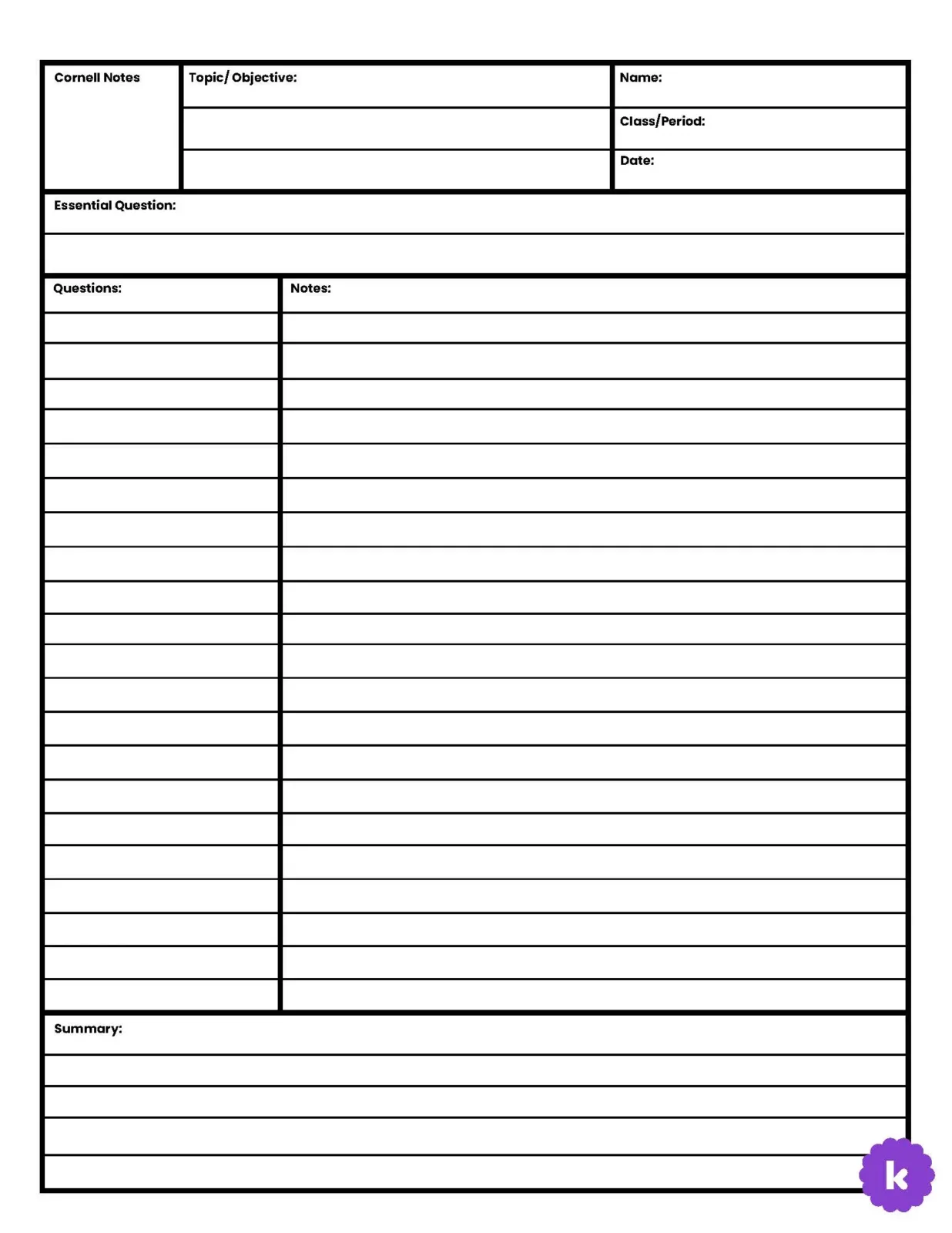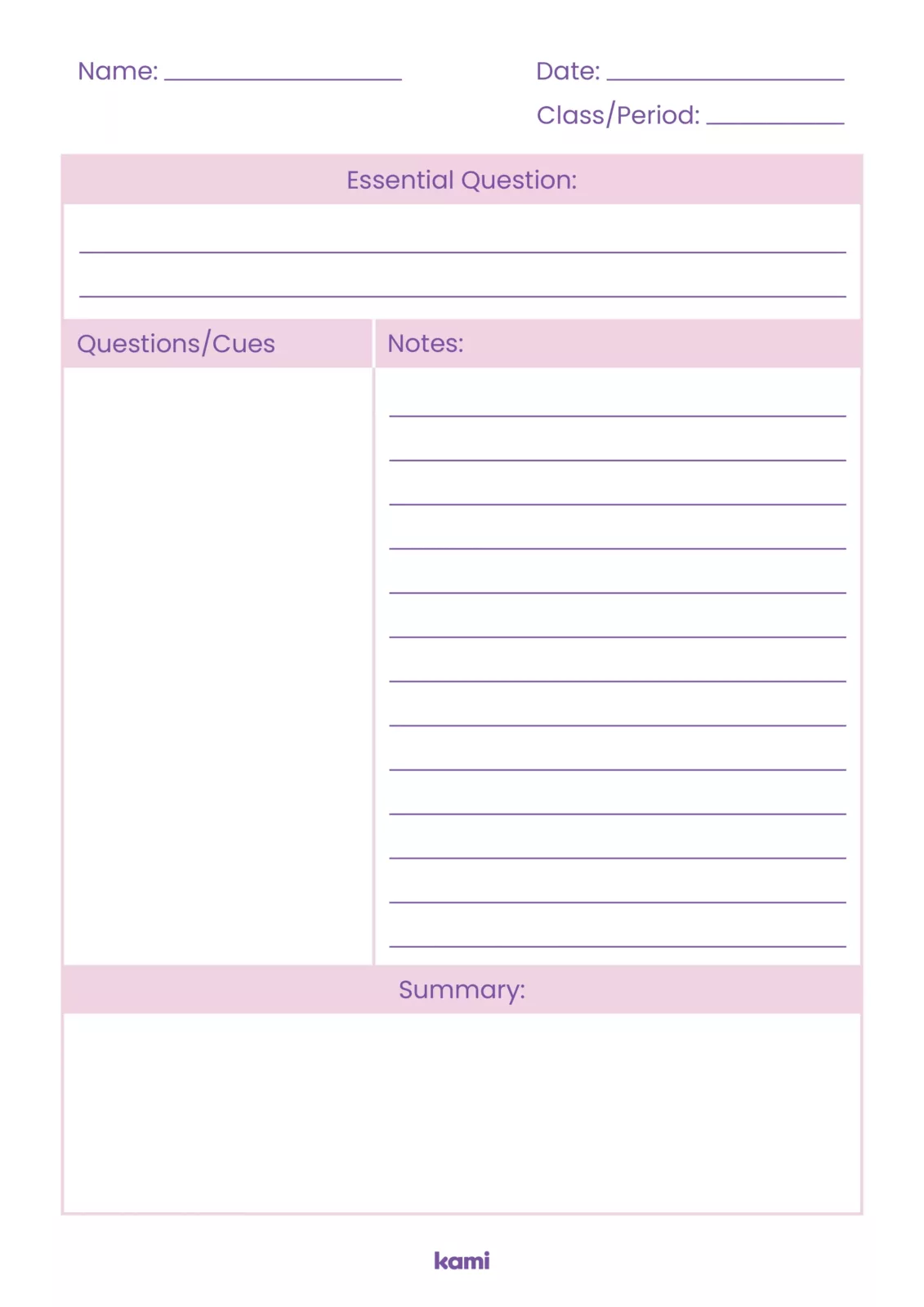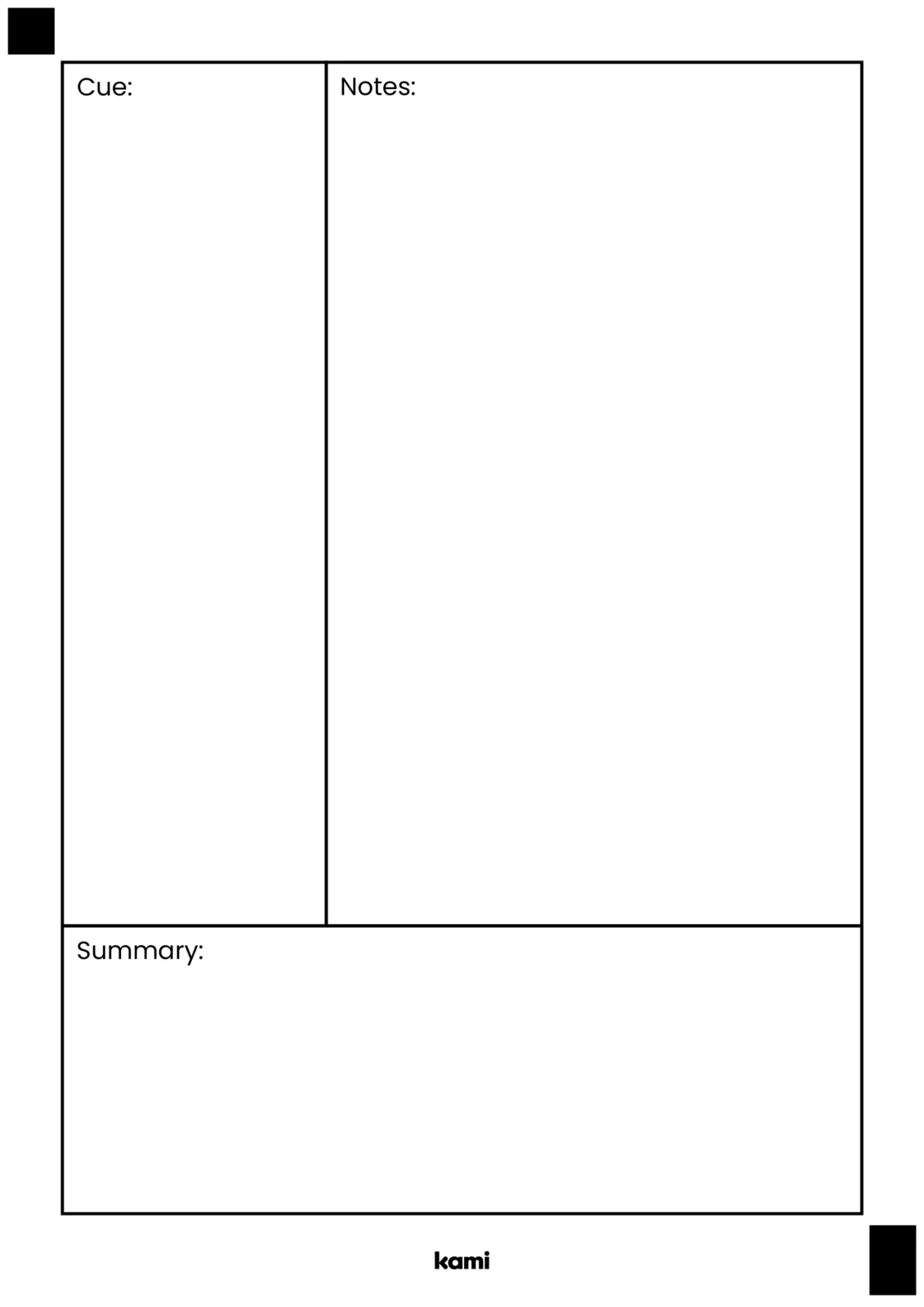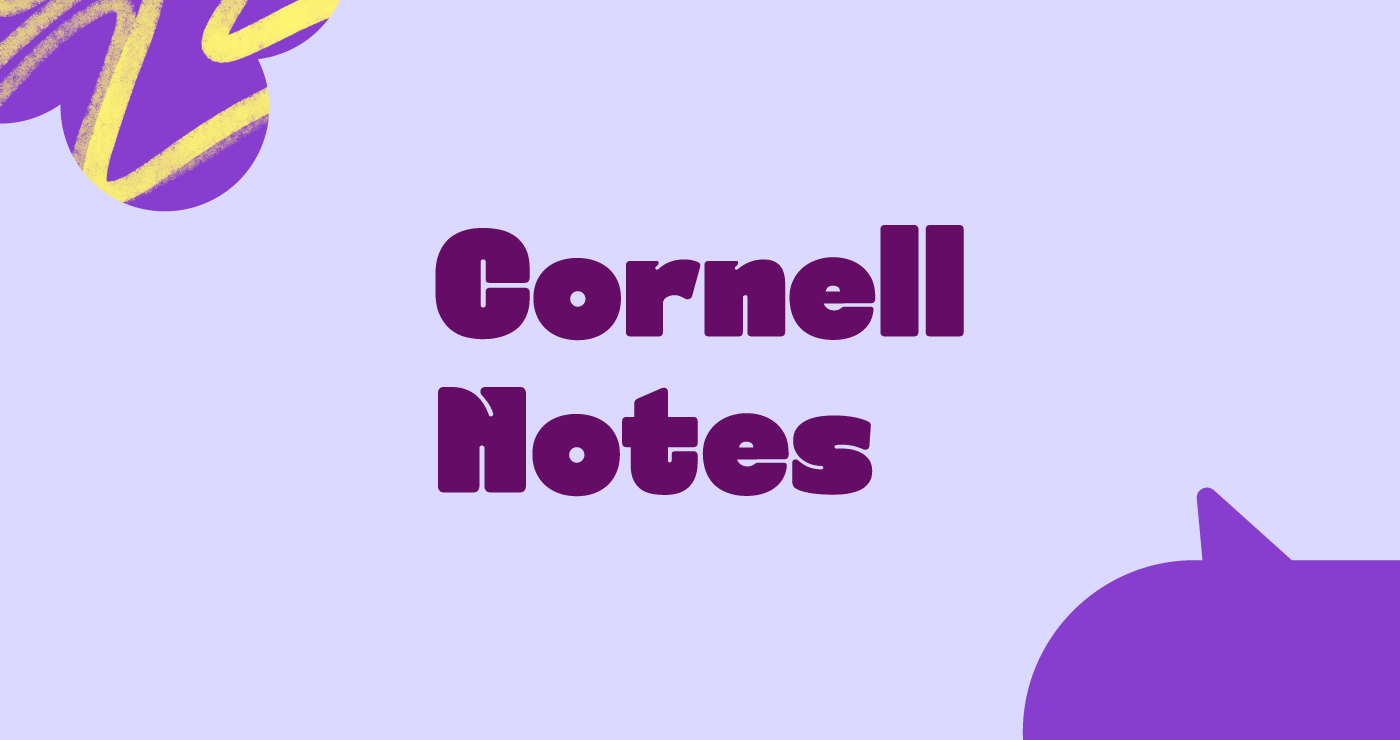Discover our collection of Cornell Notes templates in the Kami Library.



Have you ever looked over your students’ notes and wondered how they’ll ever make sense of them? Perhaps while you are teaching, you notice students furiously scribbling away trying to get down every word you say?
If you’ve been looking for a way to introduce your students to writing better notes, we recommend that you give the Cornell Notes system a go.
What is the Cornell note-taking system?
The Cornell Notes system was developed in the 1950s by Dr. Walter Pauk, an education professor at Cornell University. Dr. Pauk taught at the university for more than 30 years and was a pioneer in study skills programs. His method for more effective note-taking rose in popularity when it was featured in his 1962 book How To Study in College. The book has proved so useful and popular that it’s still printed today, several editions later.
Although initially aimed at college students, the Cornell method of note-taking can be used effectively by middle school and high school students to write notes too.
How to take Cornell Notes
Cornell Notes have four parts — the title, the cue or question section, the notes section, and the summary section. The piece of paper is divided into sections. At the top and bottom are full-width sections for the title and summary. The middle part of the paper is divided into two note-taking columns — a narrow column on the left-hand side for the cues and a wider column on the right-hand side for the notes. Most of the focus is on these two columns.
The method has three steps:
- During the class, students take notes in the large right-hand column of the paper. These should not be what the teacher says word-for-word but paraphrased brief notes using bullet points, abbreviations, and even symbols to mean different things.
- Either during the lesson or at the end, questions or headings relating to the key points of the notes can be added in the left-hand cue column.
- After the lesson, students should review the notes and write a summary of the main points in their own words in the bottom section. More questions can also be added if needed. If they haven’t already completed the title, students should also add the date and a title for the note.
The first time you use Cornell Notes in your classroom, it helps to give students a quick demonstration to show what belongs in the right and left columns. Cornell University has a tutorial here.
Four benefits of using Cornell Notes
More organized notes
The most obvious benefit of Cornell Notes is that students’ notes will be more organized. Each topic will have its own note, titled and summarized. For high school students who may need to refer back to earlier notes for tests or coursework, this can make it easier to find things. The notes’ structure also makes it easier for students to organize the information on the page.
Better listening in class
Often, students try to write down everything the teacher says during a lesson. This is almost impossible to do accurately. It also means that students risk missing some important parts because they are still busy trying to write down the previous sentences. Because the Cornell notes system focuses on taking brief notes, it gives students more time to listen to what’s happening in class. They also need to listen attentively in order to discern the important points
Active engagement in note-taking and summarizing
The process of making bullet points or brief notes, then adding cues/questions and a summary encourages students to pay more attention to their notes and think critically about the points and key concepts that they are pulling out and the connections between them. This helps retention of key information.
An instant resource for test revision
Notes can also be used later on as a study aid. Students can cover the right-hand side of the notes and use the cues/questions as a prompt to see how much they can remember. The summary also gives a quick overview of each note for quick revision.
An added bonus of teaching your middle school and high school students to use the Cornell notes system (or any good note-taking method) is that it prepares them for further study at college or university, where there will be more emphasis on independent learning and being responsible for your own notes.
Kami makes using the Cornell note-taking system simple
If you’d like to introduce your students to the Cornell note-taking method, we’ve got you covered.
Our range of Cornell Notes templates makes it easy for your students to get started without having to spend time drawing up their own sheets. Each template is already set up with the right sections, and you can choose from blank or lined depending on your or your student’s preference.
Use the template online for electronic note-taking on computers, tablets, or iPads, or print them out. And remember to check out our other note-taking templates, like Timelines, Sequence Charts, and Bubble Maps, to help your students take good notes all year round.
You may also like

From ancient academies to AI-enabled classrooms

Improving AI literacy in American schools


